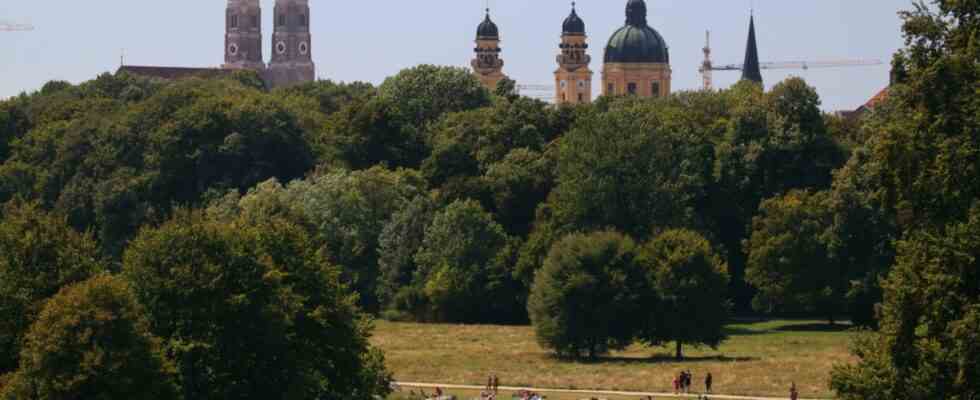A Sunday afternoon on La Grande Jatte island in Paris. People stroll through the park, a girl practices jumping rope, a man plays a horn and musically accompanies the hustle and bustle in the park. At least on the well-known picture by the painter Georges Seurat from 1886. A snapshot that clearly illustrates the role of publicly accessible parks in cities. They are important for the climate of a city, the meteorological – but also the social.
They probably emerged from palace gardens. Humans have been using plants to create green spaces for thousands of years. The hanging gardens of Semiramis are one of the seven wonders of the ancient world. In the Baroque era, absolutist rulers began to create extensive parks at their magnificent palaces, as in Versailles, Sanssouci and Schönbrunn. They were still reserved for the rulers and their guests and, above all, very formal, as Jens Spanjer, Executive Director of the Schloss Dyck Foundation and Director of the Green City Foundation, knows: “At the end of the 18th and beginning of the 19th century there were English landscape gardens in vogue as a forerunner of city parks.”
Curved paths and an idealized image of nature replaced right angles and strictly trimmed plants. “Slowly, the people were allowed in too, in Schloss Dyck, for example, initially only every Sunday,” says Spanjer. City, people’s and citizen’s parks, which were intended from the outset for a broad public, only appeared at the end of the 19th century. “Whereas the first facilities were still very landscaped and designed for walking, architectural elements were added at the beginning of the 20th century,” explains Spanjer: cafes and restaurants, sports halls, playgrounds, music pavilions and concert stages. The green areas were only gradually released.
Many parks have become emblems of their cities
It’s different today. Depending on the facility, playing, barbecuing, sunbathing or making music is permitted on the green areas. Numerous cultural events have taken place in Amsterdam’s Vondelpark every summer from June to August since 1974. Parks have become an integral part of cities around the world, some even a figurehead, such as Central Park in New York, the English Garden in Munich or the 27 square kilometer Royal National City Park in Stockholm.
Parks have several important functions. People from different cultures and social milieus come together there. They can meet each other, explains sociology professor Anna Steigemann from the University of Regensburg: “This leads to better coexistence and togetherness and contributes to social change.” For citizens from cramped living conditions, the parks are also a kind of external living room, at least on nice days.
At the same time, they are good for people’s health and well-being. Not only because the plants filter pollutants from the air. Researchers led by Katrin Böhning-Gaese, director of the “Senckenberg Biodiversity and Climate” research center in Frankfurt and member of the German Center for Integrative Biodiversity Research, in a study found out that “bird diversity is just as important for individual life satisfaction as income”.
In addition, plants and green spaces help to reduce the temperature in cities, especially in the hot summer months. For example, the city of Kaiserslautern has taken measures to unseal and green areas. This also includes creating new, small retreat areas, so-called pocket parks, in addition to the existing larger green areas.
Beech is particularly affected by the drought
It also depends on the right plants. Storm Ela destroyed or damaged up to 60 percent of the trees in the Düsseldorf parks in 2014, says park expert Spanjer: “And the drought of recent years has affected beech trees nationwide, while at the same time the heat has made many plants more susceptible to pests and diseases.” Oaks, maples, chestnuts, ash trees, almost all suffer. “The air for native tree species is becoming very thin,” Spanjer laments.
This does not mean that palm gardens will appear everywhere in the coming years, but plants from more continental climate zones have an advantage, he observed: “Hungarian oak instead of German oak, or even the North American tulip tree, which loves drought and is well suited for large parks.”
As with trees, grasses, perennials and shrubs are also changing. Some things could disappear from the green areas. “Instead of hydrangeas, which need a lot of water, in future we will have plantings with heat- and drought-tolerant perennials and shrubs, such as butterfly bushes and service pear,” says Spanjer.

